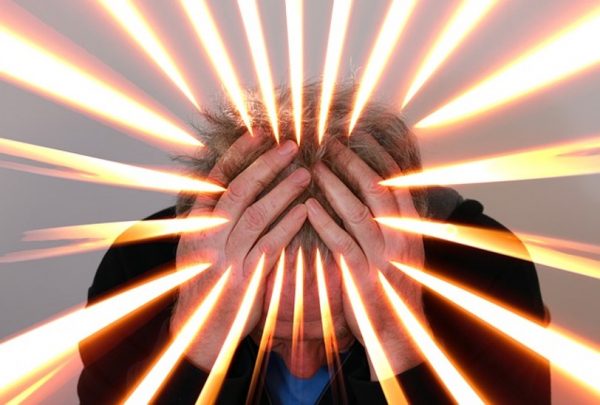
Cluster headache what is it ?
One of the worst painful headaches that humans can experience is cluster headaches that consists of group of headaches on one side of the head.
It is an excruciatingly painful headache disorder one can have. It is severe than migraine.
It is very rare to have both migraine and cluster headache coexisting. 15 to 22% people who suffer from cluster headache will have suicidal thought during cluster headache attacks. For this reason, it is also called suicidal headache.
Cluster headache is a rare chronic condition. During the pain one feels pain attacks in group or clusters means headaches occurring back to back over subsequent hours and days. These attacks can occur on consecutive days for 6 to 8 weeks. Everyday on specific time it appears and generally it will be during night time.
Cluster headache affects around 0.3% of the population. It develops in the age group of 20 to 40, occurs rarely in children and extremely rare after age 70-75. Cluster headaches has been described by patients as boring, bearing, burning, like a hot poker in the eye as well as suicide headaches. From a doctor’s note – some of the ways pain clusters are described by patients are:
“Jabbing eye socket with white hot poker and holding it there for 45 minutes”
“Just got shot in the face”
“Papercut in the eye, in the center of my head”
“Sharp and excruciating pain”
“Feels like running away from pain”
Symptoms: Cluster headache is a rare condition and misdiagnosed in many cases. It is not like migraine. Reports reveal that “most headache doctors have had patients with cluster headaches who have committed suicide from the worst pain”
- Severe headaches on unilateral side
- Headache near the orbit, the bone framing the eye, supraorbital (above orbit), temporal (at temple) or in a combination of all these sites. Sometimes it appears towards back of head.
- Red eye, eyelid swelling, forehead and facial sweating, tearing, abnormal small size of the pupil, nasal congestion, runny nose, drooping eyelid
- Restless or agitated during headache attacks.
- Attacks are one sided only and almost always the same side of the head and duration of attack is generally 15 minutes to 3hours
Hypothalamus is the brain part that involved in this pain. Hypothalamus is part of the brain involved in circadian rhythm or body clock.
Diagnosis: There are no diagnostic tests to confirm someone has cluster headache. Diagnosis is accomplished by reviewing family and personal medical history and associated symptoms. People who suffer from cluster headache should be carefully assessed. Brain imaging, vessels and diagnosing primary headache like migraine with prominent *autonomic features is essential.
*Autonomic neuropathy controls important bodily functions such as breathing rate, body temperature, heart rate. Some of the autonomic symptoms are closely associated with cluster headaches (like nasal congestion, swelling around eye, watering in eyes).
Causes of cluster headaches:
Exact cause of cluster headaches is currently unknown. Research shows that genetics may contribute to triggering the attacks. Alcohol is the only dietary trigger of cluster headaches. Strong odors may also trigger cluster headaches. Researchers have found a strong link between smoking and cluster headaches. Bright light, exertion, heat, foods high in nitrites, cocaine – can trigger cluster headaches. Another possibility is sudden release of histamine or serotonin in the hypothalamus region of brain.
Treatment:
As per American migraine foundation If the pain is acute following treatments can be used to shorten or abort a cluster attack.
- High flow of pure oxygen by mask
- Sumatriptan nasal spray or injection
- Zolmitriptan nasal spray
- DHE -45 injection or nasal spray
For prevention:
- Physical activity can relieve cluster headaches
- Lithium
- Topiramate, melatonin is recommended.
- There is no curative treatment available for cluster headaches.
- Preventive medicines like verapamil are prescribed for this pain.
Cluster headache symptoms can be confusing. If anyone feels and cannot bear the pain, instead of taking pain killers contact physician and going through proper diagnosis is critical.
References:
- Dodick DW, Rozen TD, Goadsby PJ, Silberstein SD. Cluster headache. Cephalalgia 2000; 20:787.
- https://americanmigrainefoundation.org/understanding-migraine/cluster-headache/
- https://www.theatlantic.com
Image credit: Image by Gerd Altmann from Pixabay (Free for commercial use)
Author: Sumana Rao | Posted on: December 27, 2018
« Must know answers to your cataract questions Use of Banana leaf to serve food »






















Write a comment